6 Pests that Love Autumn Leaf Piles
6 Pests that Love Autumn Leaf Piles
One of the best parts of the fall season is when the brightly-colored leaves begin to abandon their home on the trees and gradually collect in piles on the ground. But while this is a very picturesque experience, homeowners who have a few trees in the yard will tell you that it creates quite a bit of extra yard work for them. Letting piles of leaves sit idle for too long can create some problems. The lawn or plants under the grouping may smother or develop a type of mold, which gets worse as we get into winter. There are also plenty of critters that love living in leaf piles for any amount of time. This may not seem like a big deal at first, but this quickly turns into a larger problem when those pests decide that your nearby house would be a better shelter! Any animal can decide that leaves are a good home, but let’s talk about the six common ones that make invading leaf piles an autumn tradition.
Earwigs
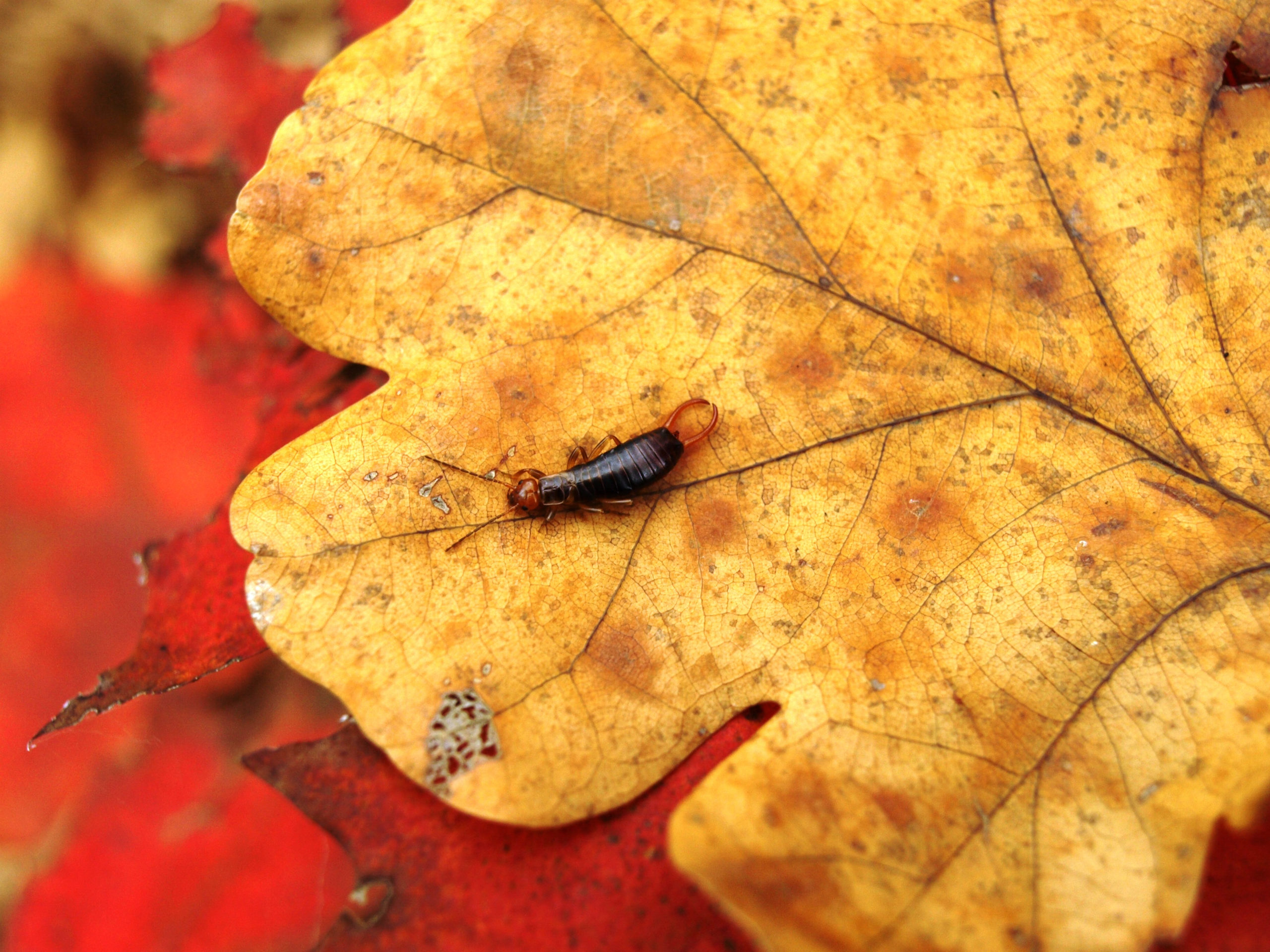
Earwigs are an interesting pest, considering how forgettable they are until we see them. Many of us don’t think about earwigs until they crawl through our homes. This is partially because earwigs prefer spaces away from any potential predators. Their favorite qualities in a shelter are dark and moist, which is why they are often found in bathrooms and garages. They love leaf piles for this exact reason, as leaves that sit out for a while in fall weather provide the perfect dampness for earwigs. In addition to shelter, earwigs also have quite the expansive diet in piles of fallen leaves. They live off of decaying matter and smaller insects, both of which are in abundance in this setting. Leaf litter is a common diet of many fall pests, which is always apparent in those famous leaf piles. Earwigs have a set of pincers on the end of their bodies to use as defense, but they rarely use them against humans. Still, it’s best not to grab the pests to test out this theory, as it would be a painful result.
The Larger Problem: Earwigs are not a major issue when they mind their business amidst the leaves, but they can be an annoyance when they make their way into our homes. They are an overwintering insect, meaning they survive winter by finding a cozy shelter from the adverse weather and emerge in the spring to continue their generations and find food. This is why you may find some earwigs inside during the fall and winter months. They like to hide in secluded areas of the house when it’s chilly outside, which is how they avoid being found by many of us most of the time.
Rodents
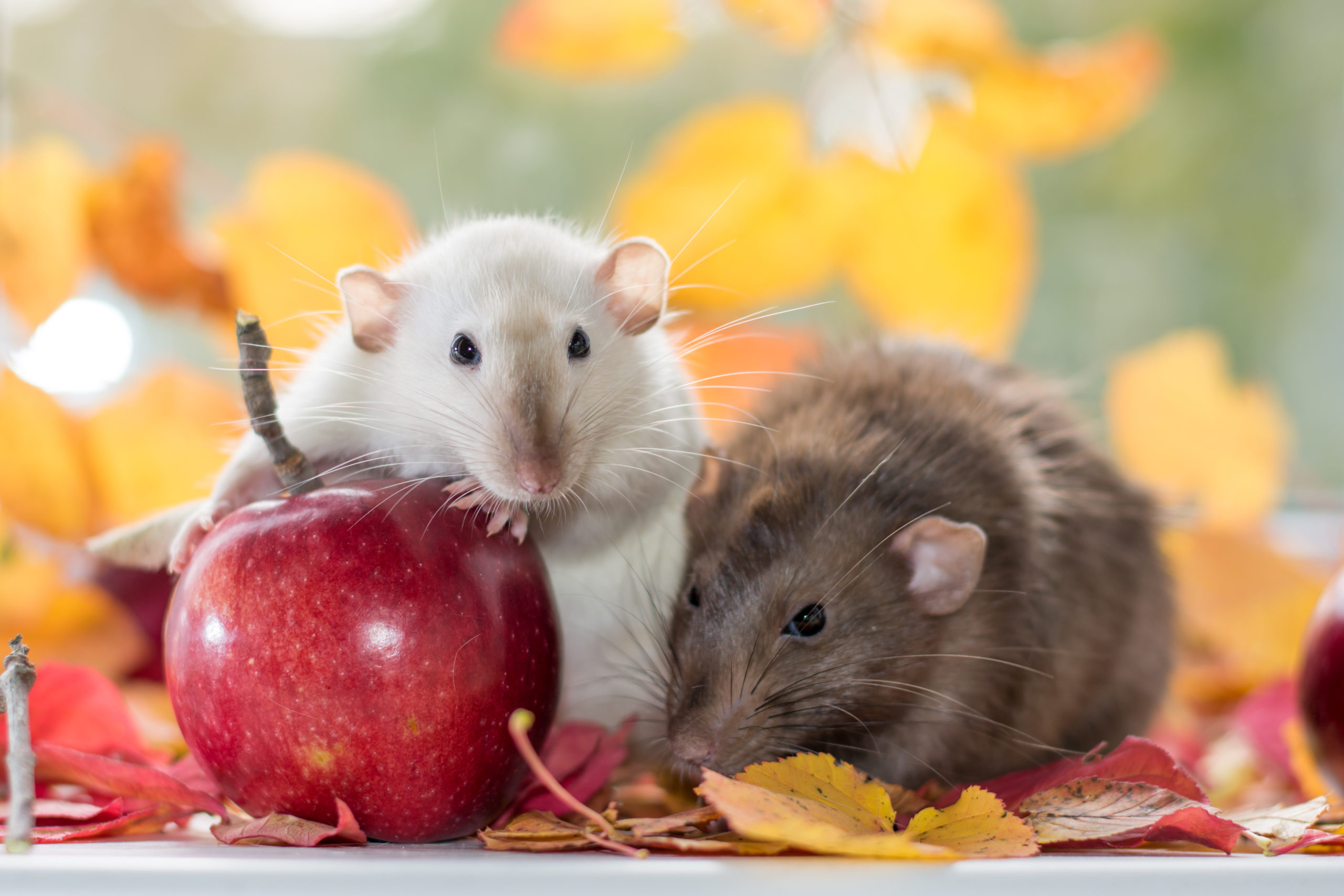
Most leaf pests are small enough that it’s easy to miss them upon first glance, but this is definitely not the case with rodents. Rats and mice both like their shelters to be dark and hidden from anyone else, so they can go out and hunt for food to bring back home for their ever-growing family. Big leaf piles are just the solution for these pests, as they can hide within the leaves and find plenty of sustenance in the area. Rats and mice are omnivores, so they have a lot of options for food. They enjoy smaller insects, leaf litter, trash, and anything that provides some protein for energy. Leaf piles have the added bonus of often including twigs, which are perfect for rodents who need to constantly be gnawing to keep their teeth down. Besides just being a shelter for the adult rodents, the piles of colored leaves are also great for hiding a family of baby rodents. This is another reason to not let leaves sit forever, as it just gives the rodents more time to reproduce and continue expanding their numbers of invading pests.
The Larger Problem: You will likely notice a pattern with the main issue of all of these pests. Rats and mice also like to overwinter in warm shelters while they rest for the busy spring season. They can squeeze through the tightest and smallest of spaces, which is how they get into houses with just a small hole in the exterior. Since rodents can survive on many different food sources, they have options when they leave their nest in the attic or garage to go hunt. Besides stealing food and making a mess with their nests, rodents have the added health risk of carrying plenty of diseases and harmful bacteria. They can transmit these in many ways, including through their waste and fur, so you definitely don’t want these pests anywhere near your home. Keeping the kitchen trash regulated and inspecting for any exterior cracks and holes are the easiest ways to prevent rodents from having a winter vacation in your house.
Ants
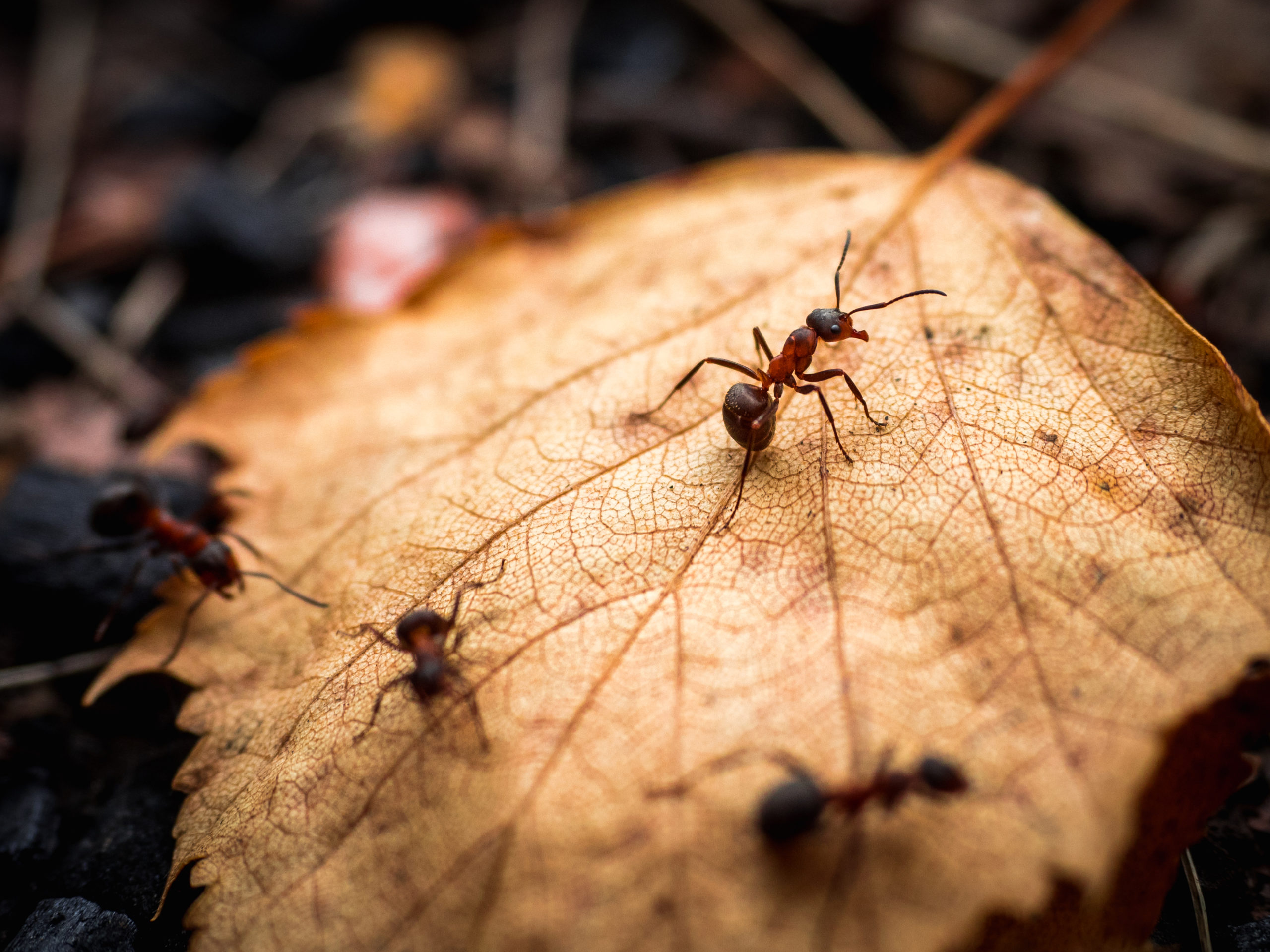
Ants are always inviting themselves to the party, no matter what season it is at the moment. Wherever there is food and some kind of hidden area in the ground for their nest, you are likely to find a colony of ants. The shelter and food that they want are both found in piles of fallen leaves. The layers of leaves and organic matter provide the perfect cover for their massive colony to live underground, especially if the leaves are idle for a long time. Ants eat basically anything organic, especially if it’s sugary, so they can find a variety of items in the pile. Some ants even eat smaller insects, including termites and roaches, which are also often found in leaf piles. Rainfall is more frequent in fall, which means the ants also have a water source right by their home. Ants can stay hidden within the leaves for as long as they want, which is how they avoid being hunted or eradicated by homeowners who want the pests gone.
The Larger Problem: Ants may be content with the shelter and food that comes with a leaf pile, but they will stay there forever. As soon as the weather starts to get a little too chilly, ants look for a more secure home in which to survive the winter. This unfortunately means that ant infestations are still very much possible in the fall. Since they are so small yet resourceful, ants can utilize the smallest crack to get inside a warm house. They are especially attracted to it if there are crumbs or food particles they can smell. But besides the obvious annoyance of having ants inside, they also bring up a different kind of worry. Ants attract larger predators that enjoy them as a tasty snack, which means they can inadvertently bring other pests literally to your doorstep. Talk about a double-edged sword!
Spiders
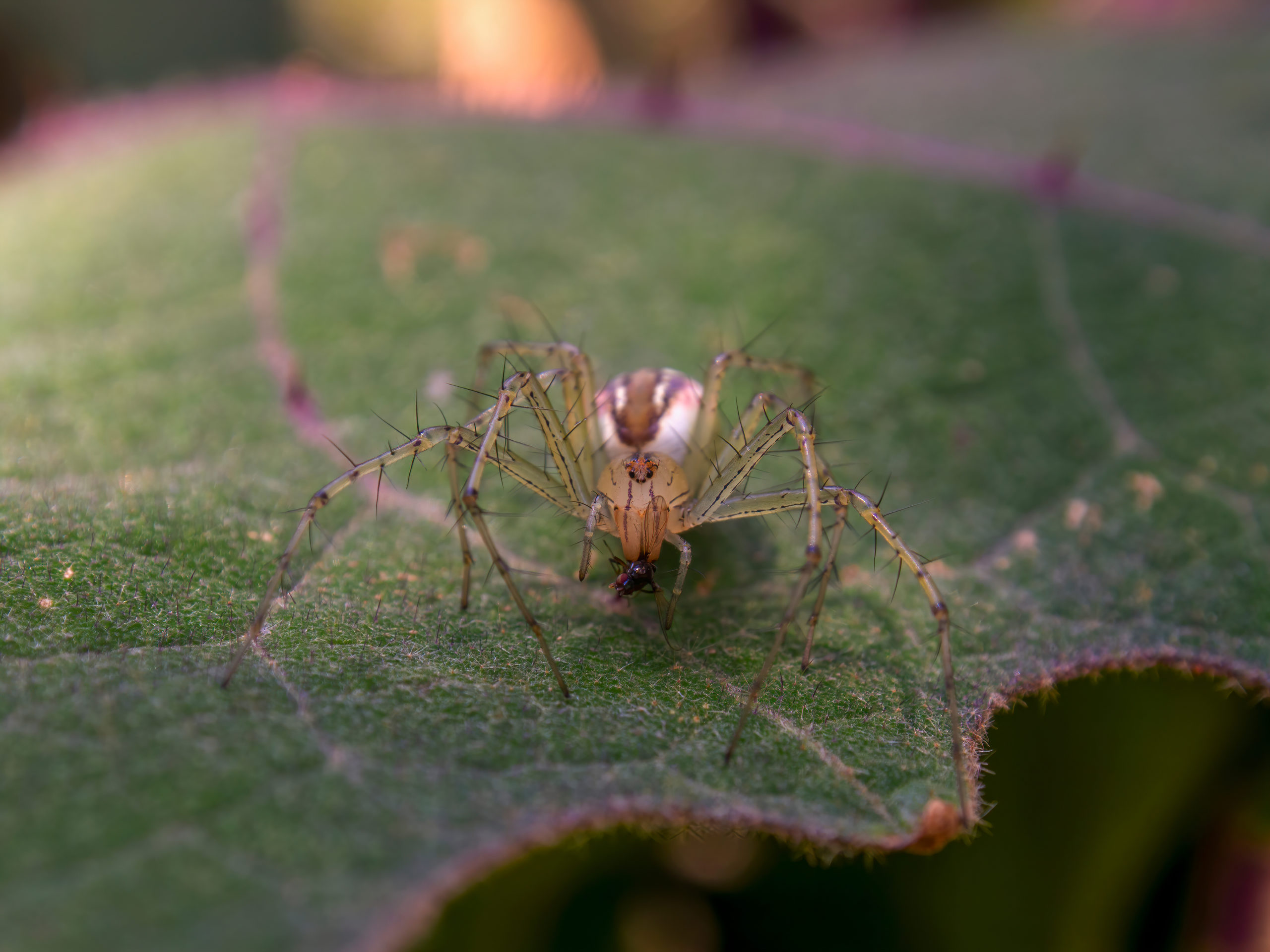
Spiders are like a youth sports team after the first day of a tournament: they go wherever the food is. Since we know many insects love living in leaf piles, it makes sense that spiders would also like to live amidst the fallen foliage. Some spiders (black widows, garden spiders) like to build webs and wait for their prey to fall into the trap, while others (wolf spiders) skip the web to go hunt for their prey in the wild. Both types can find plenty to eat within leaf piles, so you can expect to see a wide range of arachnids in an abandoned leaf pile. Besides the feast that spiders can find in leaves, they also have plenty of options for their own shelter. They can burrow further in the ground, build a web within the leaves, or just rest under a couple of them before venturing out. Many spiders like to stay more elevated for their food options, which means that they will make their way to the gutters filled with leaf litter for different dietary options. But no matter where you find them, spiders are definitely busybodies in the fall season just like any other time of year.
The Larger Problem: Spiders are not invisible, so they also need shelter from the approaching bad weather. They like to live in the hidden corners and sections of our homes not just for the shelter, but also for the likely food sources in smaller insects. Many spider species prefer to be away from people and do not pose any real danger to us. They are creepy and a nuisance, but that is sometimes overlooked when it comes to their beneficial habit of eating smaller pests. But there is one common fall spider that should not be overlooked: the brown recluse. This nightmare-producer has a dangerous bite filled with their venom, which can be bad news for us if we do not get the bite treated immediately. Brown recluse spiders love leaf piles for the shelter and the darkness within them. This is exactly why you don’t want to blindly reach into a leaf pile during yard work, as a brown recluse bite is not the kind of fall activity we want to partake in.
Beetles
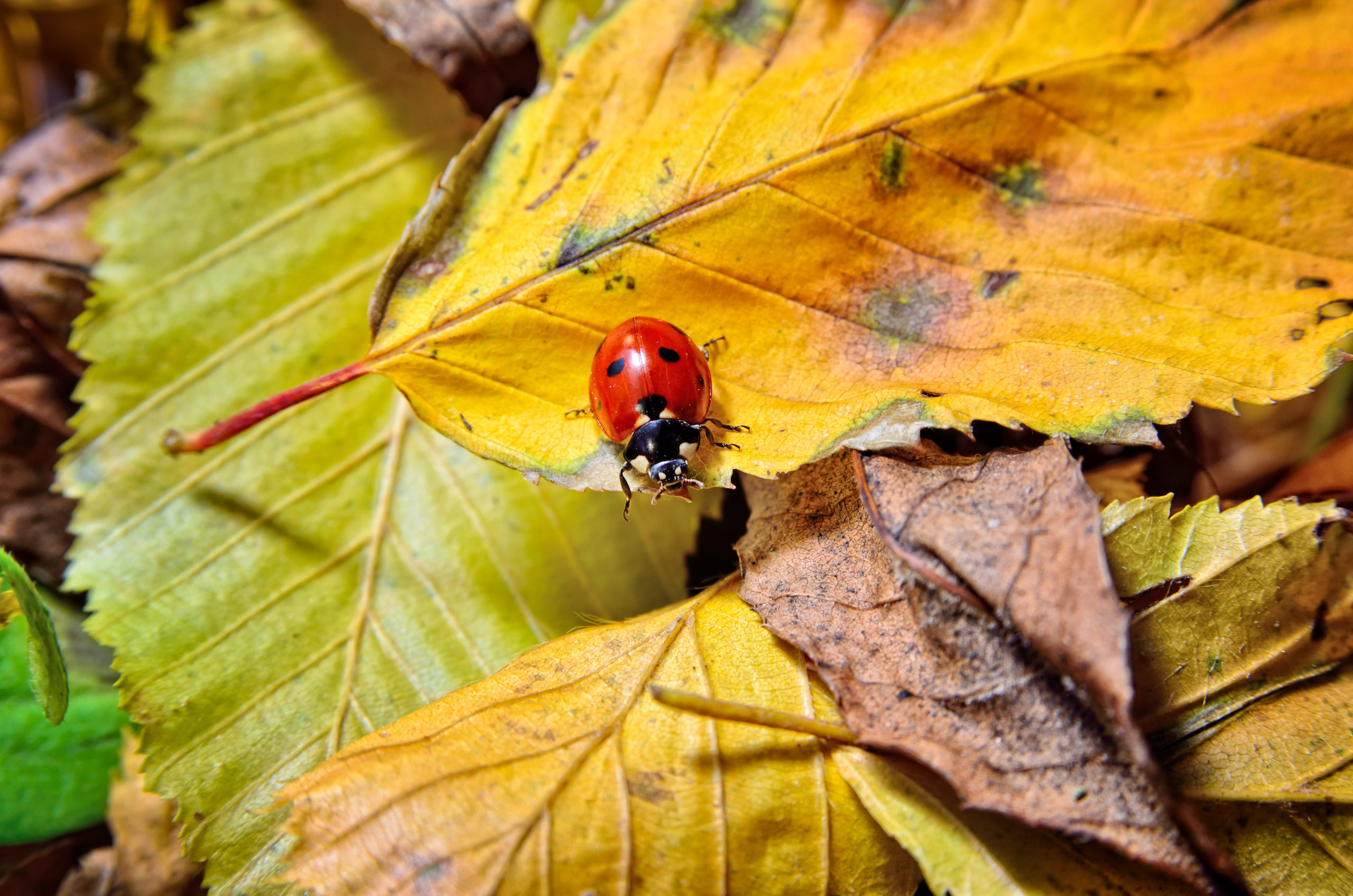
The term “beetle” is used to describe a wide range of insects, from stink bugs to ladybugs to ground beetles. But beetles in general like to remain hidden from potential dangers and stay in the darkness, which leaf piles have in spades. Most beetles can fly for at least a little ways, which means they can get up to the gutters where they have even more food and shelter options. Beetles also like to be warm in general, which is easier to achieve the deeper into the leaves they go. The specific species dictates how beetles survive the colder weather and if they need to find better shelter before the actually bad weather sets in. Beetles eat all kinds of organic matter, some of which includes other insects, so they can thrive in the fall just as much as in the summer, if not more.
The Larger Problem: Beetles may enjoy the shelter and buffet that comes with a leaf pile, but they would never pass up the opportunity to upgrade to the ultimate shelter of our homes. It is an easy transition for beetles to go from a leaf pile to enter through a crack in a house. And since they like to remain as hidden as possible, they can stay in our homes for a while without us noticing. The different species of beetles all have their own way of laying eggs, but many of them would choose to lay them in piles of leaves to provide their offspring with immediate food and shelter. When those young beetles turn to our homes for their overwintering shelter, we have even more problems on our hands than just raking up leaves.
Centipedes
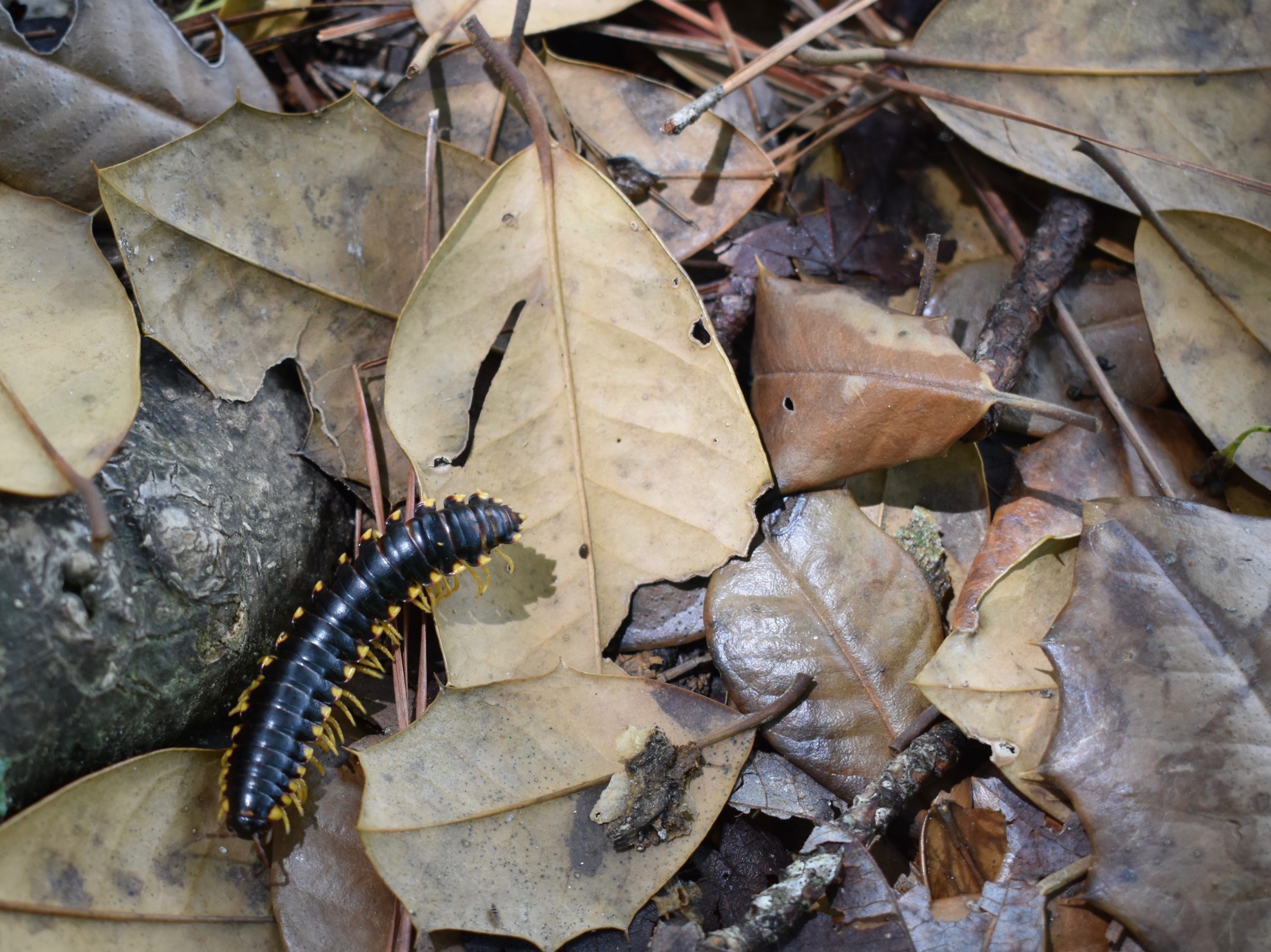
While they are potentially the creepiest ones on the list, centipedes are also one of the most harmless to us. They like dark and damp areas to live, such as in the middle of a leaf pile. Since centipedes are nocturnal, they can stay hidden from many potential predators for a long time. They like to be near or on the ground at all times, so you would only really find them in normal leaf piles instead of in the gutter. Centipedes are expert hunters despite their blindness or lack of eyes, in some species. They enjoy all kinds of insects, many of which can also be found in piles of fallen leaves. Their favorites include flies, silverfish, termites, moths, and roaches. The vibrant colors of fall leaves warn insects not to lay eggs on them, so centipedes often just have adult insects to choose from for their next meals.
The Larger Problem: Centipedes can also invade our houses if they are in the area already, but only if they can sense that there is adequate moisture inside as well. They often stick to bathrooms and garages, but centipedes can go wherever they find food and water. They are technically beneficial, but that does not mean we want them in our houses rent-free. The good news is that centipedes are not technically dangerous, so they are not a threat to us whether or not they stayed in the leaves. They have a venomous bite that paralyzes and kills insects, but it is not nearly strong enough for us. It usually just results in a mild irritation of the area, but please seek medical attention if the bite area does not heal soon.
Pest Control Can Help Pests “Leaf” Your Home Alone
When you decide to clean up the leaves in your yard, there are a couple of precautions we suggest you take to prevent being bitten or attacked by any leaf-dwelling pests. Wear pants and a long-sleeve shirt if you are directly handling a bunch of leaves, as this will do a better job of keeping pests from hitching a ride on you to go inside your home (eek!). On that note, wearing thick gardening gloves is definitely a good call when handling leaves and greenery of any kind. This is especially true when you clean out the gutters, as many pests are expert hiders in this space. However you choose to clean up the leaves in your yard, try not to let the bulk of them sit for a while. The sooner the leaves are taken care of, the less likely they are to house a bunch of pests waiting for the perfect overwintering home.
While cleaning up leaves and leaf litter is a typical household chore, pest control can be easily handled by pest control services. Just because certain pests love leaves and gutters does not mean that you have to deal with a pest invasion on top of everything else. Our team of expert technicians are thorough in their inspections and treatments to ensure that there is not a hidden space pests can inhabit. Autumn is a time to enjoy the cooler weather and beautiful foliage, not a pest army! Contact us to learn more about how our EPA-approved treatments can keep your yard from being littered with leaves and pests.
Citations
Bauer, S. (n.d.). Good question: Do you really need to rake all those leaves?. University of Minnesota: Driven to Discover. Available at https://turf.umn.edu/news/good-question-do-you-really-need-rake-all-those-leaves (Accessed on September 22, 2022).
Pests that love leaves. (2020, November 13). Maggie’s Farm Products. Retrieved September 22, 2022, from https://maggiesfarmproducts.com/blogs/bug-help/pests-that-love-leaves
Wasson, S. (2022, July 26). 10 pests commonly found in fall leaves. House Method. Available at https://housemethod.com/pest/10-pests-commonly-found-in-fall-leaves/ (Accessed on September 22, 2022).
Yong, E. (2009, April 15). Are red autumn leaves a warning sign to insects?. National Geographic. Available at https://www.nationalgeographic.com/science/article/are-red-autumn-leaves-a-warning-sign-to-insects (Accessed on September 22, 2022).
Request a Free Quote Today
(We do not share your data with anybody, and only use it for its intended purpose)


